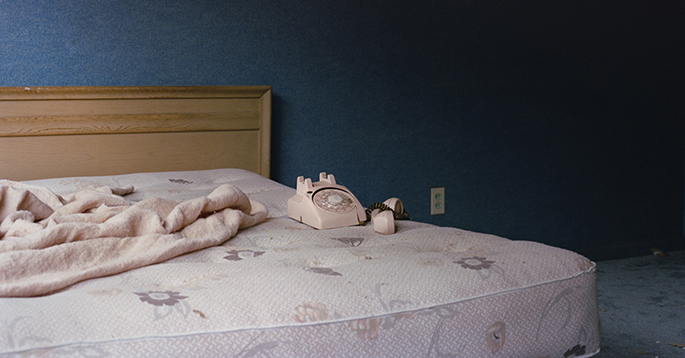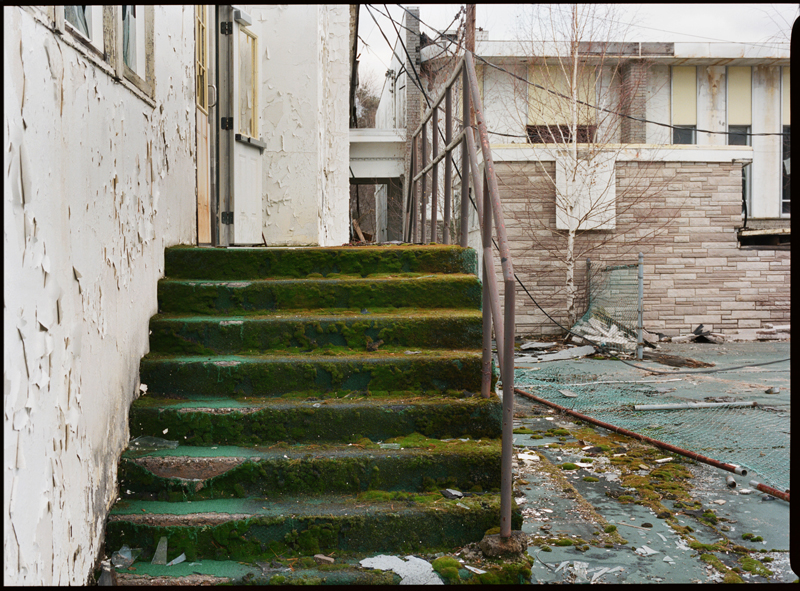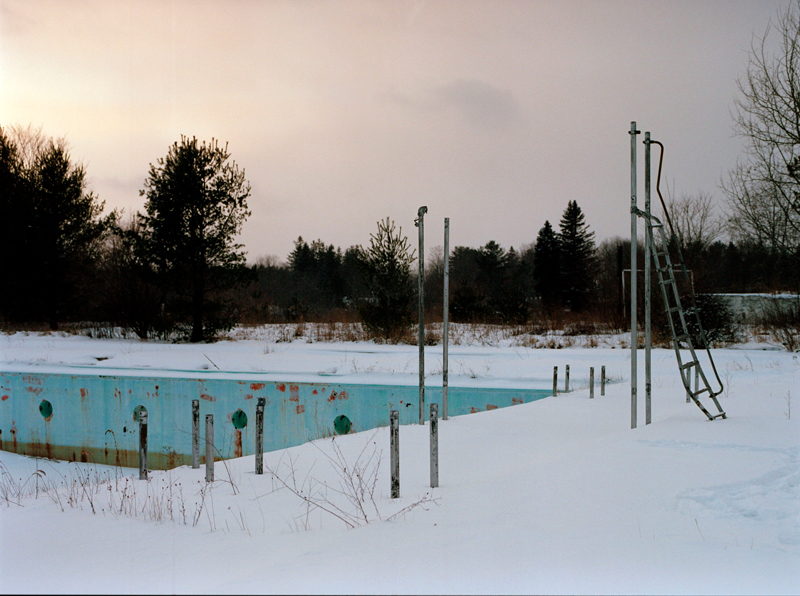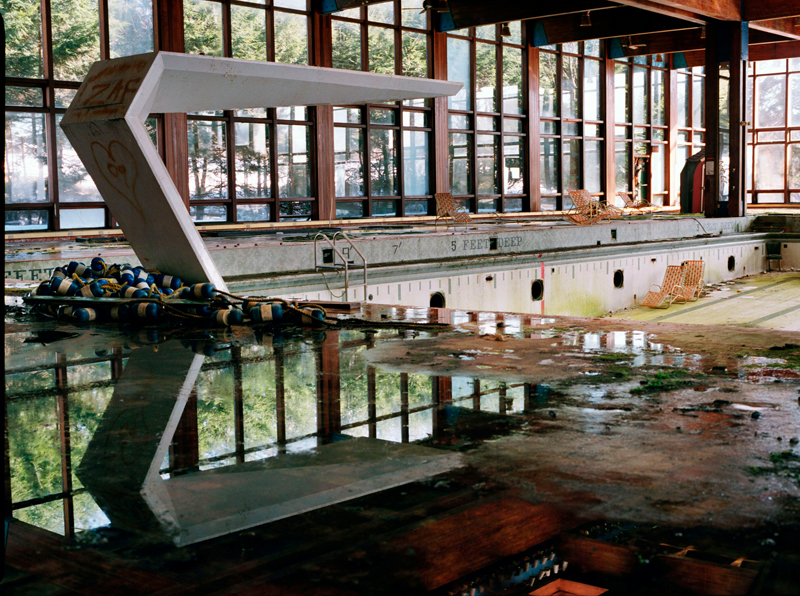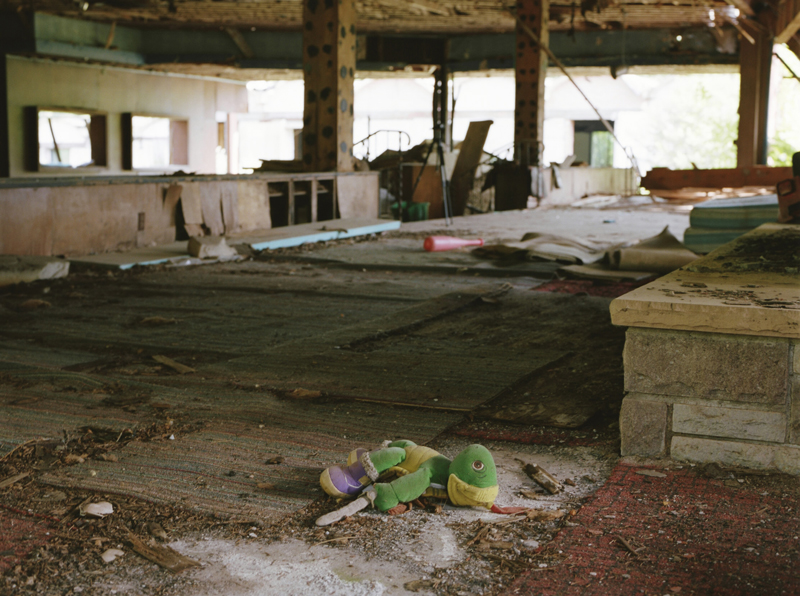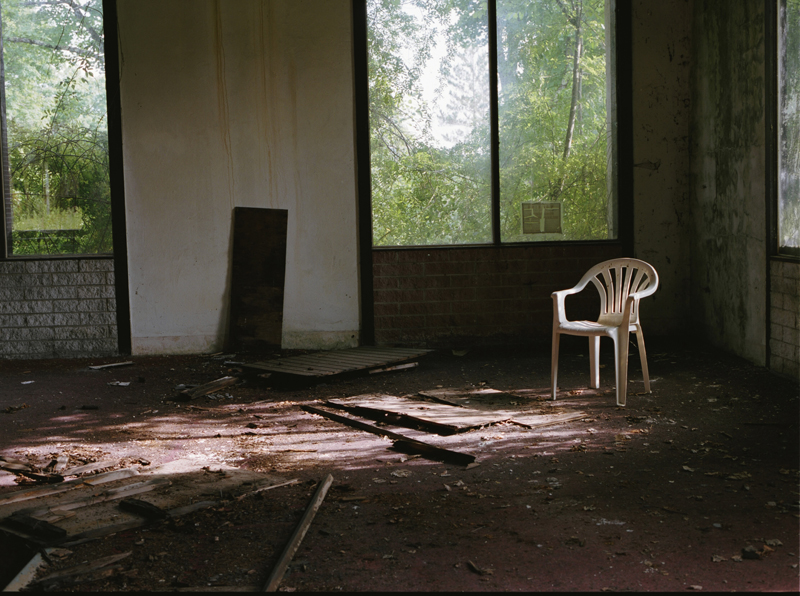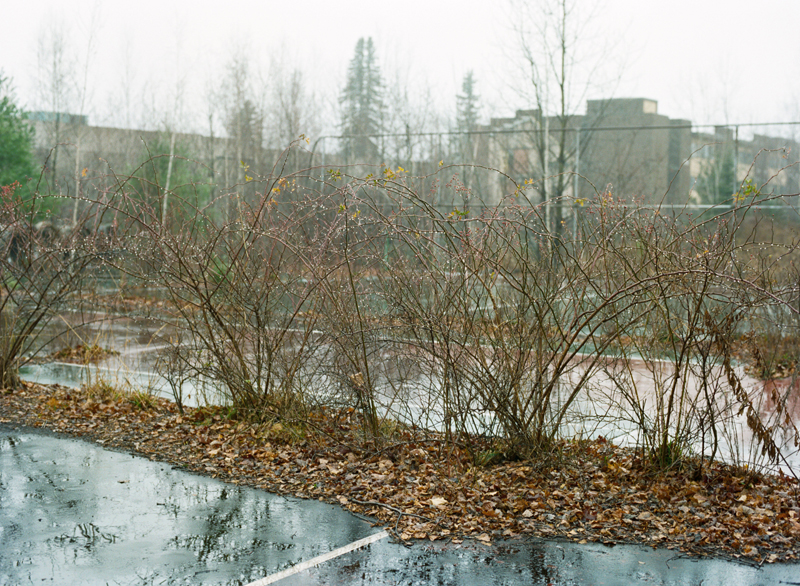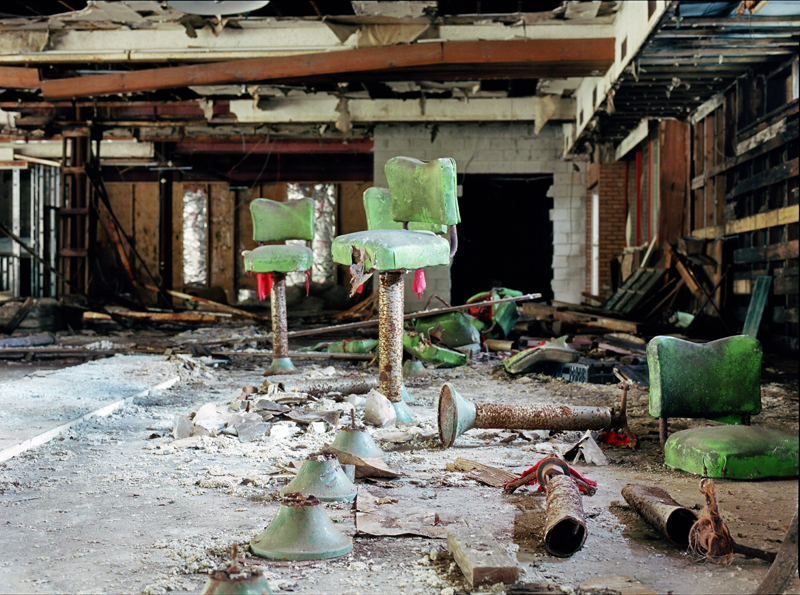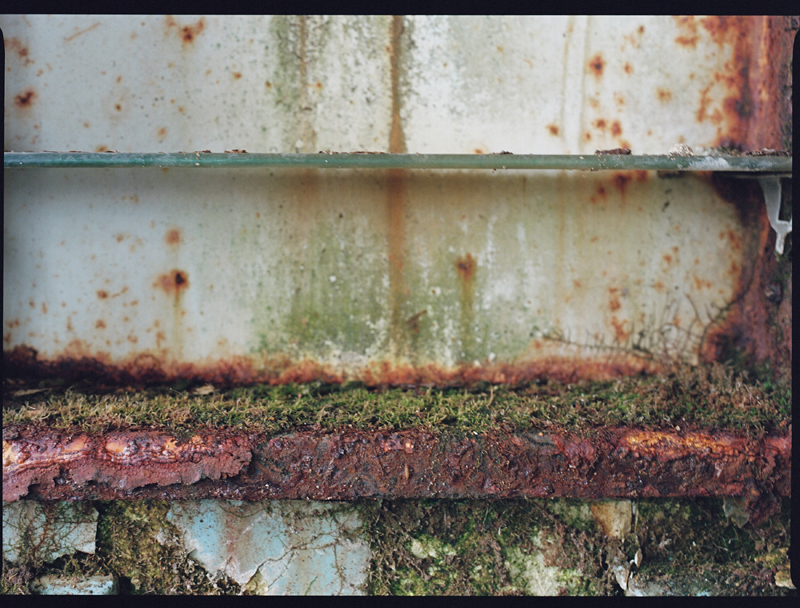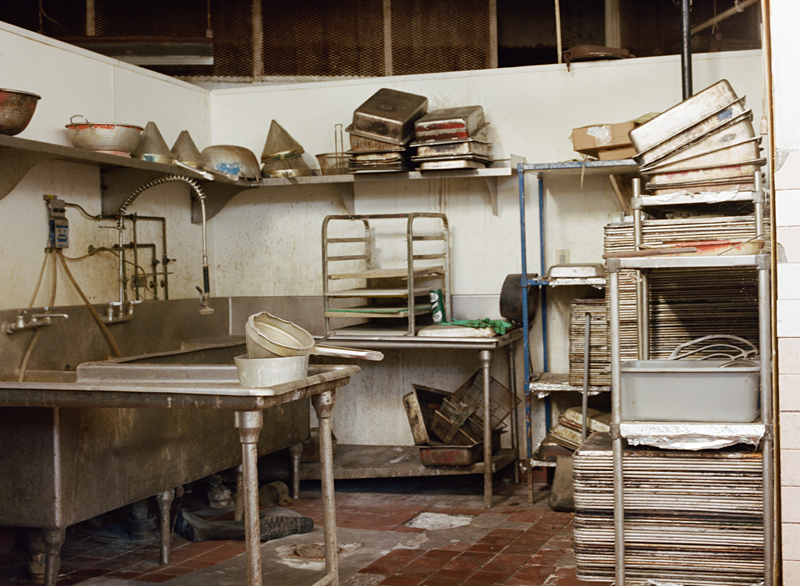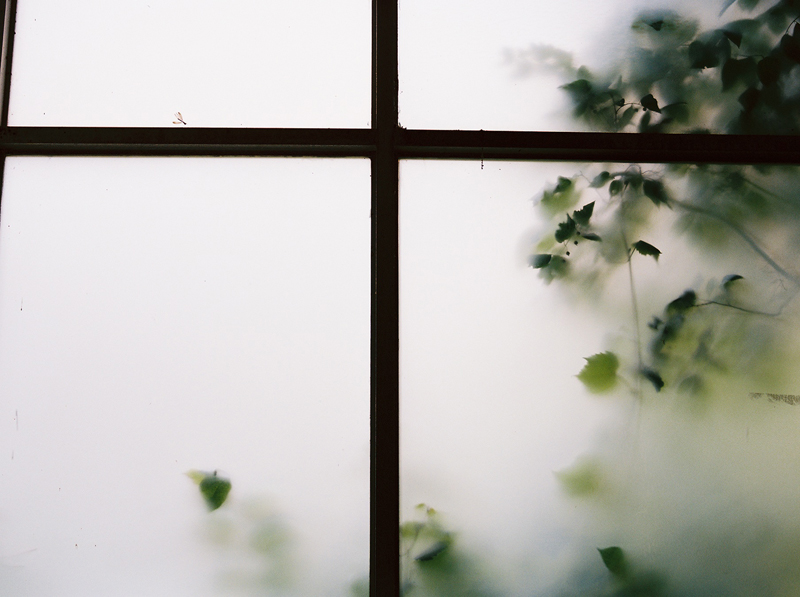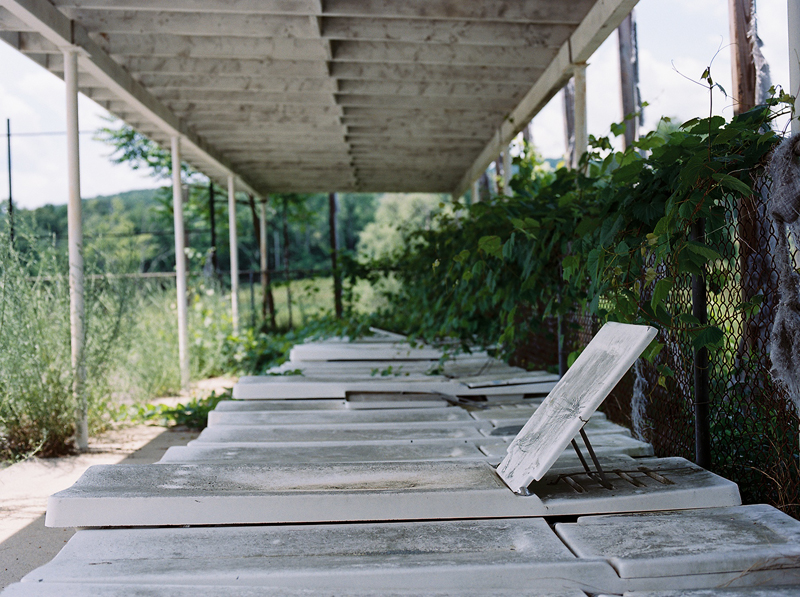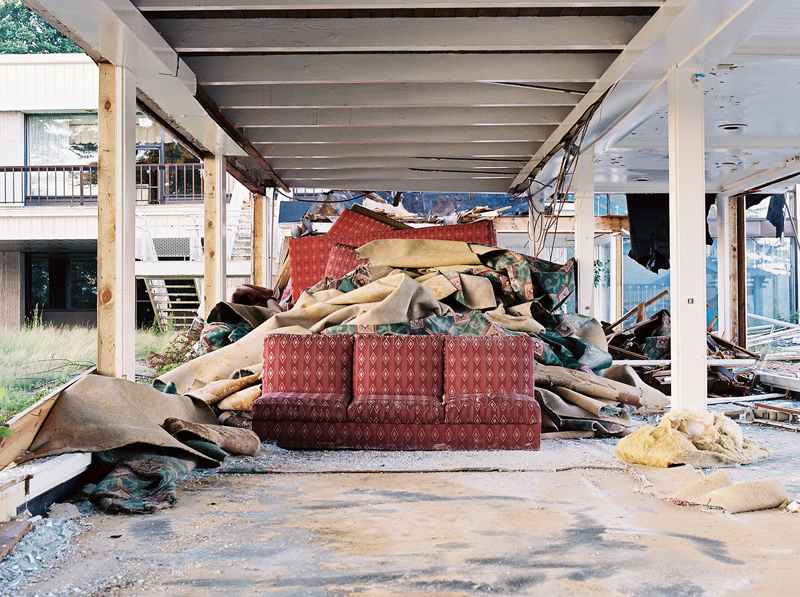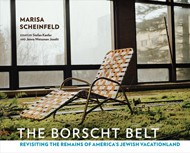Earlier this week, Marisa Scheinfeld reflected on how the themes of the Jewish High Holidays relate to her book, The Borscht Belt: Revisiting the Remains of America’s Jewish Vacationland, a collection of photography capturing the remains of onetime Jewish resorts in upstate New York. Marisa is guest blogging for the Jewish Book Council all week as part of the Visiting Scribe series here on The ProsenPeople.
From the beginning of this project, my intention for this photographic series was to be published as a book containing three essays and over 100 images. I am so happy that five years later, this goal has come to fruition.
The Borscht Belt: Revisiting the Remains of America’s Jewish Vacationland begins with postcards of the Borscht Belt era in its prime and then delves into the photographic series at large. The first pages of it reveal an external view of an overgrown entrance to Grossinger’s and then by the third or fourth photograph the viewer is led inside. Then, like a journey, one is led into a lobby, through a showroom and outside to an Olympic sized swimming pool, revisiting the vestiges of a paradise that is now long gone. Other photographs convey the cycle of life or current activity occurring in the spaces such as a bird living in a guestroom, stacked pots and pans in a kitchen, a flight of steps supporting a combination of AstroTurf and moss, or a rotary phone lying a bed, off the hook. Each scenario is exactly how I found it, arranged not by myself but by time and chance.
Upon making various trips to my photograph the region notably known as the Borscht Belt in each season, I ended up with hundreds if not thousands of photographs. In the end, I had to make some crucial edits. Edits, with regard to photographs, shape an overall narrative and lead a viewer’s eyes through a curated selection of imagery. The book and series was edited over a period of about three months and is intended to flow like a voyage of sorts, traversing the abandoned hotels and bungalow colonies of the area just as I did, revealing relics and remnants both close-up and from a distance.
The book is comprised of exactly 129 photographs of 40 resorts, hotels and bungalow colonies. There are many photographs that I had to let go of on the cutting room floor. Sometimes, it was very difficult. It wasn’t that the photograph was bad per se, it was just to avoid redundancy, or for space constraints. Much of the ephemera did not make it into the book, either — I amassed a large collection of original ephemera from the era in the form of postcards, brochures, matchbooks, and 2‑D and 3‑D objects that are arranged on various pages of text in the book. I weeded out multiple postcards of pools and merciless cut out photographs of my family members at a specific hotel.
 The Borscht Belt was a tremendously impactful era. We know from hearing about it or its marker in the cannons of Jewish American history that it provided entertainment, leisure and fun to so many people, particularly Jews; it also, was places where social bonds were formed, many that continue to this day. I hope this era is never forgotten. Sentimental as it might seem, I operate from the most personal of places because the Borscht Belt is the place where I grew up and the location I will always call my home. I am hopeful for the region to witness another transition, one that will fuel its economy and bring an influx of foot traffic back into the region. I look forward to see what time delivers. While the images contain pathos for what once was, within the photographs I see much room for contemplation about the present and the future. To that end, I present to you a selection of images that did not make the final cut. I am glad that at least here they’ll find a place to reside…
The Borscht Belt was a tremendously impactful era. We know from hearing about it or its marker in the cannons of Jewish American history that it provided entertainment, leisure and fun to so many people, particularly Jews; it also, was places where social bonds were formed, many that continue to this day. I hope this era is never forgotten. Sentimental as it might seem, I operate from the most personal of places because the Borscht Belt is the place where I grew up and the location I will always call my home. I am hopeful for the region to witness another transition, one that will fuel its economy and bring an influx of foot traffic back into the region. I look forward to see what time delivers. While the images contain pathos for what once was, within the photographs I see much room for contemplation about the present and the future. To that end, I present to you a selection of images that did not make the final cut. I am glad that at least here they’ll find a place to reside…
Click on any image below to browse the full gallery of outtakes from the book:
Marisa Scheinfeld’s photography has been exhibited nationally and internationally and is among the collections of The Center for Jewish History, The National Yiddish Book Center, The Simon Wiesenthal Center, The Magnes Collection of Jewish Art and Life and The Edmund and Nancy K. Dubois Library at the Museum of Photographic Arts
Related Content:
- Visiting Scribes on The Missing Parts, Revisions, and What’s Next
- Leigh Stein: Back into the Beyond
- Marjorie Ingall: Uh, Five Reasons My Book Was a Year Late
Marisa Scheinfeld was born in Brooklyn, NY in 1980, and raised in the Catskills. She received a BA from the SUNY Albany in 2002 and an MFA from San Diego State University in 2011. Marisa’s work has been exhibited nationally and internationally and is among the collections of The Center for Jewish History, The National Yiddish Book Center, The Simon Wiesenthal Center, and The Dubois Library at the Museum of Photographic Arts. The Borscht Belt: Revisiting the Remains of America’s Jewish Vacationland is her first publication.
